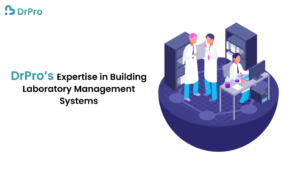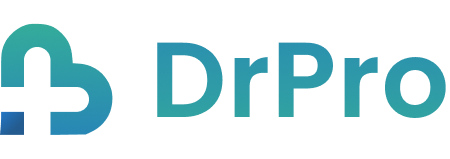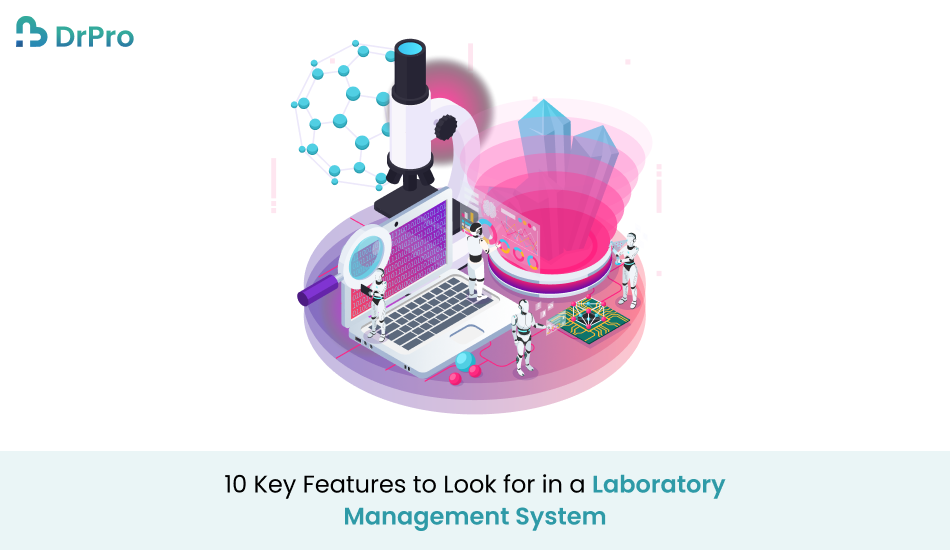Quick Summary
LMS software is, therefore, critically important to today’s laboratory to ensure that data, workflows, and compliance needs are well met. Key issues that play a crucial role when it comes to choosing the right LMS software include data management, automation, ability to track compliance and integrate with existing systems. In this article, 10 characteristics that are central for any laboratory that wants to establish an efficient management system are presented.
Introduction
With the development of more and more novel technologies, more data, elaborate work processes, and stringent regulatory parameters are being managed by laboratories of the contemporary, high-speed world. Coping with healthcare, pharmacological needs, and research, laboratories simply require systems capable of effectively and reliably assisting them. This is the reason why a Laboratory Management System (LMS) is particularly useful. LMS software manages sample tracking systems, laboratory reporting systems, and data handling and organization systems to allow laboratories to concentrate on their core mission rather than administrative tasks.
Consequently, deciding on how to implement an efficient LMS may go a long way in improving the daily efficiency of running a laboratory. Of course, there are hundreds of tools on the market at the moment, increasing the chances of choosing the appropriate tool to analyze the important features that would make the most difference. In the following section, we detail 10 fundamental factors that laboratories should take into consideration when choosing LMS software.
What is a Laboratory Management System?
A Laboratory Management System also known as LMS is an application that is aimed at helping the laboratory to manage their flow of work, data, and samples amongst other aspects that they deal with. It provides a home for all SaaS related to planning and coordinating tests, managing samples, analyzing data, and fulfilling compliance requirements and reports. An LMS software interfaces with other lab systems, instruments, databases, and regulatory systems assuming that all lab processes are relevant and conform with the current compliance requirements.
10 Features to Look for in a Laboratory Management System

Sample Tracking and Management
Sample Tracking and Management The tracking and management of the samples is one of the essential features of a developed Laboratory Management System since they go around their complete cycle in the LMS. Starting from the sampling moment up to the moment of reporting of results, there should be clear traceability of the sample. It should also enable the lab staff to enter, update, and, oversee the sample data as they happen. This level of visibility helps to check on samples that are not misplaced or mishandled in the event leading to the testing being conducted and to produce accurate tests.
Data Management and Storage
Data Management and Storage Laboratories process large amounts of data daily: starting with patients’ records and continuing with the results of tests, as well as quality control data. A good LMS software should provide the central base for the storage of information that will make the information be stored in a way that can be easily retrieved. The system should allow for both structured and unstructured data storage to help laboratories develop records. Furthermore, LMS software needs to be able to return data to be interrogated and used for decision-making purposes to improve lab performance and reporting.
Workflow Automation
Workflow Automation The primary aspect that needs attention to streamline the lab is automation. An LMS software developed should be in a position of automating processes like test order, sample documenting, and reporting. It eliminates much of the human involvement and thus the mistake involved by far by making the turnaround time faster. This has a plus side since the lab staff gets to work on other issues apart from carrying out the repetitive processes, hence increasing efficiency.
Instrument Integration
Instrument connectivity An LMS software should have the connectivity feature to fit laboratories and their instruments and equipment to help with data gathering and analysis. Through instrument integration, the results of the tests are captured in the system to eliminate the repetitiveness of data input. Moreover, it is integrated with instruments to track equipment performance, maintenance, and calibrations to keep the lab equipment functional.
Compliance and Regulatory Management
C&RM must conform to different standards that are usually in operation including ISO, CAP, CLIA, and HIPAA industry standards. An LMS adds compliance because it tracks regulatory rules, and documentation, as well as offers automatic audit trails for laboratories. The system should also produce output to match regulatory requirements and notify employees when this specific type of action is needed – for instance, when quality control tests should be conducted or documentation should be updated.
Reporting and Analytics
Reporting and Analytics: An LMS is specifically used in laboratories and making decisions based on data is crucial. It should also provide reports on the performance of the lab, tests conducted, results achieved, and the statistical measure of compliance. Some of the benefits of a system’s analytic capabilities include on-trend analysis, productivity management, and finding possible inefficiencies. Filtering reports based on their characteristics is also significantly important since it allows presenting data that are necessary for a particular lab in the most helpful way.
Inventory Management
Stock control More so, it is vital to balance the stock of supplies and reagents in a laboratory to enhance the smooth running of the lab. Some of the features that should be incorporated in a good LMS software are aspects of supply inventory that may enable the lab staff to order supplies or monitor supply use patterns.
Real-time tracking of inventory within the lab makes certain that the lab does not exhaust critical materials, and that the problem of buying more of the same products than is necessary is eliminated. It should also notify the users when some of the supplies stored are low or the ones in the store have expired to avoid shortages and the use of expired supplies.
User Management and Access Control
User Management and Access Control Laboratory scenarios more often than not involve the stringent limitation of who can access given data and perform particular operations on them. The web-based teaching system must therefore have a highly effective user management functionality whereby rights of users can be grouped or restricted concerning their access to information. This helps to provide better security since only people with the right keys can perform certain operations or even view certain records, Combine this with proper audit trails and you have rightful security as well as an increase in accountability. The system should also record users’ interactions in case of an audit to check on adherence to their tenets.
Scalability and Customization
It is for this reason that Scalability and Customization Laboratories change as well as the management systems they implement. A good LMS has to be a growing system to allow laboratory growth without the system outgrowing. Stems. A good LMS should be scalable, allowing the laboratory to grow without outgrowing the system. It should also be designed where it could be tailored to meet various requirements of various types of laboratories including healthcare, research, and industrial laboratories. This flexibility may guarantee that LMS software changes with the future requirements, innovations, or contours of the workflow.
Client and Patient Portal
A client or patient portal is an important function for laboratories that work with such customers as clinics, hospitals, research facilities, or patients. It also enables clients to input samples for testing and receive test results, information about the status of a sample, and interact directly with the laboratory. This makes communication with and between the lab and stakeholders easier, hence improving transparency. The presence of a well-crafted portal guarantees that the clients and patients obtain their data on one hand with ease and on the other hand with privacy hence enhancing customer satisfaction.
Why Is This Necessary?
The above aspects play a major role in determining the efficiency, and accuracy of a laboratory, and its compatibility with compliance standards. Labs master large amounts of data and samples they handle; without sufficient LMS software in place, such labs will likely experience higher error rates, plus delays. With such 10 functions, it becomes easy for laboratories to enhance their operations, and increase service delivery to their clientele and clients or patients.
DrPro’s Expertise in Building Laboratory Management Systems

DrPro particularly focuses on the development and deployment of Laboratory Management Systems unique to laboratories’ operational needs in different industries. About products, DrPro’s LMS software solutions are aimed at supporting the incorporation of key features like sample tracking in real-time, electronic workflows, and compliance to allow a smooth and efficient lab’s functioning.
With DrPro, labs obtain adaptive, additive systems that are compatible with their instruments and data management systems. The emphasis on data protection, compliance with rules, and convenient interfaces guarantees that labs can achieve high-performance levels with minimal paperwork burden to their employees.
Conclusion
Choosing the correct Laboratory Management System means that a laboratory will perform optimally, run by the requirements set by the government or other regulating bodies, and provide results on time. As highlighted in this article, laboratories can make the right decision on which system to select by focusing on the 10 features described herein. From sample tracking, and data management to the compliance that is necessary to track, these features are intrinsic to effectively managing a modern lab.
Again, for those who want particular LMS solutions, you have the skills and tools you require to build a system that suits your laboratory. Effective lab management through the improvement of a lab’s LMS software also benefits the lab in generating a competitive advantage in an industry that is becoming ever more reliant on data.
Together, ProjectTree and DrPro offer a powerful integration that enhances productivity and effectiveness across project management and healthcare sectors
FAQs
1. What is the main function of a LMS software?
LMS software is designed to manage and automate various lab processes, such as sample tracking, data management, workflow automation, and compliance tracking.
2. Can LMS software integrate with existing laboratory instruments?
Yes, many modern LMS software solutions, including those provided by DrPro, offer instrument integration, allowing for seamless data collection and real-time updates from lab equipment.
3. How does an LMS software help with regulatory compliance?
An LMS software helps with compliance by automating documentation, tracking audit trails, and ensuring that labs meet necessary regulatory standards such as ISO, CAP, CLIA, and HIPAA.
4. What are the benefits of inventory management features in LMS software?
Inventory management features in LMS software help labs monitor stock levels, automate reordering processes, and prevent expiration of supplies, ensuring that the lab always has necessary materials on hand.
5. How can an LMS software improve lab productivity?
An LMS software improves productivity by automating routine tasks, reducing human error, and streamlining workflows. This allows lab staff to focus on more critical tasks, leading to faster turnaround times and better accuracy.


